Estimated reading time 16 minutes, 48 seconds.
It isn’t just birds that fly south to escape months of bitter weather in Canada. From mid-March through late April, the Royal Canadian Air Force (RCAF) deployed to Naval Air Station Joint Reserve Base (NAS JRB) New Orleans, La., to participate in Exercise Cougar South.
The exercise brought together 409, 425, and 433 Tactical Fighter Squadrons with 12 CF-188 Hornets, a 437 Transport Squadron CC-150T Polaris tanker, and a CC-130T Hercules provided by 435 Transport and Rescue Squadron. Also in attendance were 12 and 42 Radar Squadrons from 3 Wing Bagotville, Que., and 4 Wing Cold Lake, Alta., respectively. In total, approximately 200 personnel were deployed for the duration of the exercise.
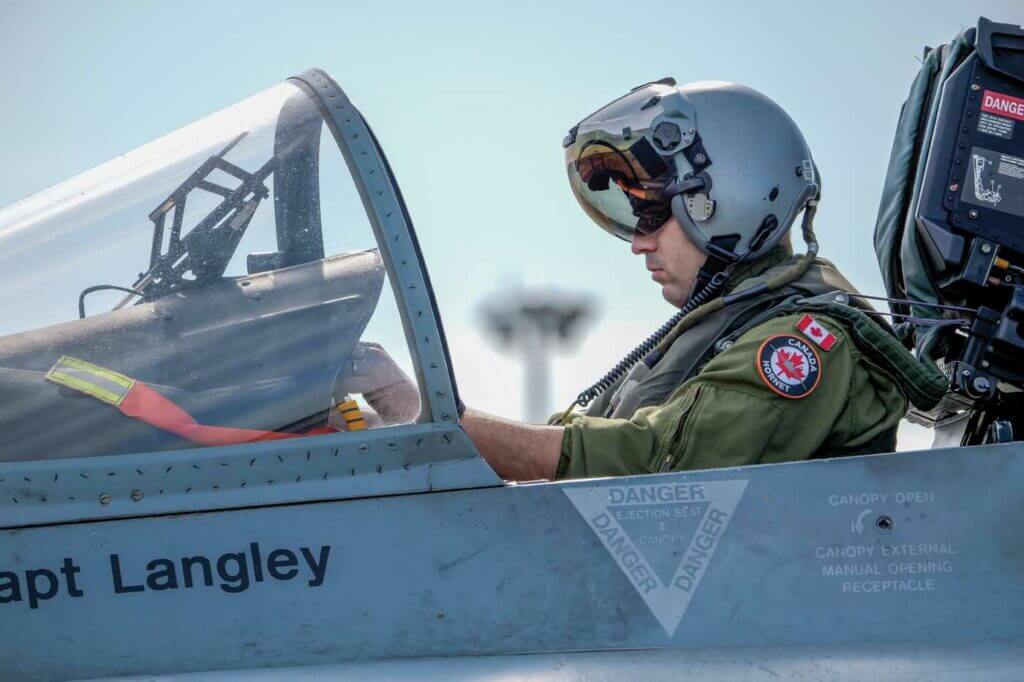
Since its entry into Canadian service in 1982, the CF-188 has been subject to significant upgrades to ensure it remains a credible and capable asset for the RCAF. The latest upgrades, part of what is called the Hornet Extension Project (HEP), will extend the life of the fleet until the arrival of the first F-35A Lightning IIs in 2026.
The jets are in the process of receiving a combat capability upgrade through the HEP, which will see the current APG-73 radar in the Hornet’s nose replaced by the APG-79(V)4 AESA (active electronically scanned array) radar. Under its wings, the CF-188 will carry the radar-guided AIM-120D AMRAAM (advanced medium range air-to-air missile) for beyond visual range engagements. Other new weapons include the AIM-9X Block II Sidewinder infrared missile and the AGM-154 JSOW (Joint Standoff Weapon), which is an air-to-surface glide bomb with an unclassified published range of at least 100 kilometres.
As part of Ex Cougar South, the deployed CF-188s trained alongside United States Air Force (USAF) Boeing F-15 Eagles and United States Marine Corps (USMC) Boeing AV-8B Harriers. Combined training exercises like Cougar South allow the RCAF to integrate with international partners and participate in larger, more complex scenarios than it could stage alone.
Leading the deployment was LCol Stephen Latwaitis, then commanding officer of 425 Squadron, who has been flying the CF-188 since 2008. He explained how interoperability has long been integral to NATO and its partners’ operations, especially following recent events in eastern Europe.
“We’ve seen through our deployments recently in Europe that we need to know that we can work and train together so that we can be prepared, if ever needed, to fight together,” Latwaitis told Skies.
“Through mission planning with the U.S. Marine Corps, United States Navy controllers, and the U.S. Air Force, we got an invaluable insight into how other people look at the same tactical problem, but from a different perspective, different experience, and different background,” he added.
Behind the Scenes
Although the CF-188 is a multi-role aircraft, the focus during Cougar South was on the air-to-air domain. According to Latwaitis, the exercise saw the RCAF conduct “basic fighter manoeuvres (BFM) of 1v1 — maybe one F-18 versus one F-15 — then 2v1, which we call ACM (air combat manoeuvring), and all the way up to full-scale missions,” he explained. “We had trips where we had more than 20 jets airborne.”
Mission planning for Cougar South followed a typical path with crews either preparing for morning sorties the afternoon prior, or arriving early in the morning to plan missions later that day. Comprehensive briefing and debriefing took place before and after every mission, where crews discussed a number of subjects ranging from flight safety to mission delivery and results.
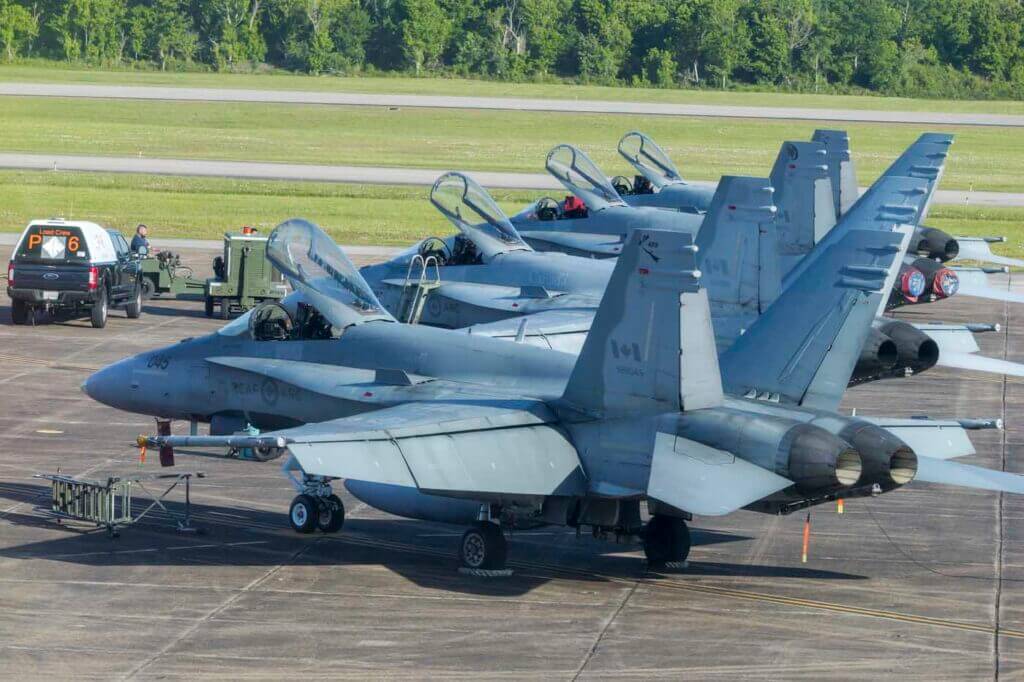
Like any major exercise, Cougar South presented a range of challenges to both seasoned and junior personnel. For some of the newest pilots, it was their first taste of operating in missions so large and complex. Those with more flight hours in their log books had the chance to upgrade their skills and qualifications — thanks in part to the large number of participants.
In addition to the USAF and USMC, Canadian defence contractor Top Aces joined the exercise to provide adversary services. The Montreal-based company uses a fleet of Dornier Alpha Jets, Bombardier Learjet 35As, Lockheed Martin F-16As, and Douglas A-4 Skyhawks to provide a range of advanced combat training options.
For Cougar South, Top Aces deployed four Alpha Jets, five pilots, 10 maintainers, and an operations coordinator. The Alpha Jets carried underwing jamming pods that were operated by members of 414 Squadron, which provided four electronic warfare officers flying in the back seat.
“We offered adversary services for both 433 and 425 Squadrons — generally offensive and defensive counter air, ACM, and BFM, as directed by their scheduler,” said David Whittal, a current Top Aces and former RCAF CF-188 pilot.
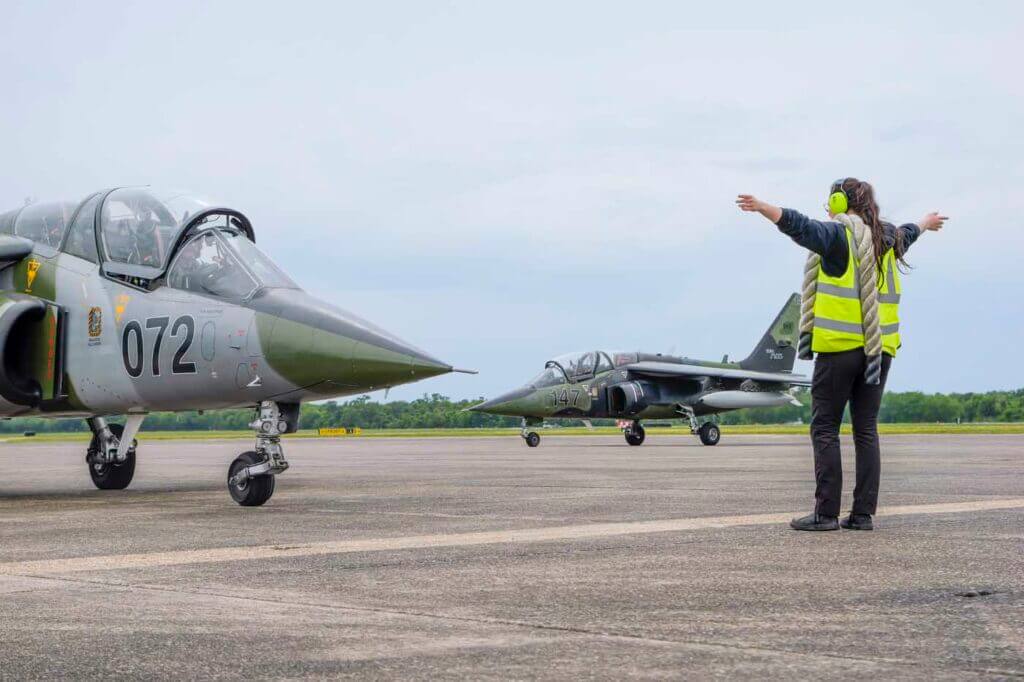
“Top Aces played the aggressor role; whatever adversary [the exercise planners] wanted to simulate, we played that adversary,” he added. “We can simulate a number of platforms and weapon systems depending on the mission.”
Although not as powerful as the CF-188, the Alpha Jet does offer one substantial advantage: cost. As a lightweight trainer, the Alpha Jet’s cost per flight hour is a fraction of the Hornet’s, though it still offers a manoeuvrable and capable aggressor platform. Plus, contracting to third-party providers like Top Aces reduces the demand on frontline fleets, which is particularly beneficial for the RCAF and its aging Hornets.
Reliability is another factor that makes Top Aces so attractive. According to Whittal, “We had [an] almost 98 per cent serviceability rate [during Cougar South]. If they wanted four airplanes, they typically got four airplanes every mission.”
A number of Top Aces’ aggressors, including Whittal, are former RCAF pilots, which helped the two organizations integrate together.
“We have pilots from a vast array of backgrounds, but all have either served in the Canadian Air Force or another air force in multi-role flight ops,” he explained. “Some of the current pilots are full-time Alpha Jet pilots that serve only Top Aces. We also have pilots that work part-time for us and fly for Air Canada, who are former CF-18 pilots. And, we have current reserve pilots who are flying the CF-18 and the Alpha Jet for us.”
On the RCAF side, one of the pilots who deployed to Cougar South was Capt Joshua Taylor. With four years of experience flying the CF-188, he knows how to get the very best out of his aircraft: “The CF-18 is a joy to fly. The flight control computer is incredible; essentially you just point it where you want it go and the computer will keep it heading that way. [Flying the jet] can be anything from ballet to extremely punishing as you’re flying basic fighter manoeuvres,” he shared.
The real test of endurance for crews was the long days away from home. Latwaitis acknowledged that while “we all miss our families, by being here there’s more mission focus. That’s one of the reasons we’re able to generate a lot of the sortie generations we can — because we have more time to be here.”
During an exercise like Cougar South, crews can face working days lasting more than 12 hours. Accordingly, it was important for them to be as prepared as possible.
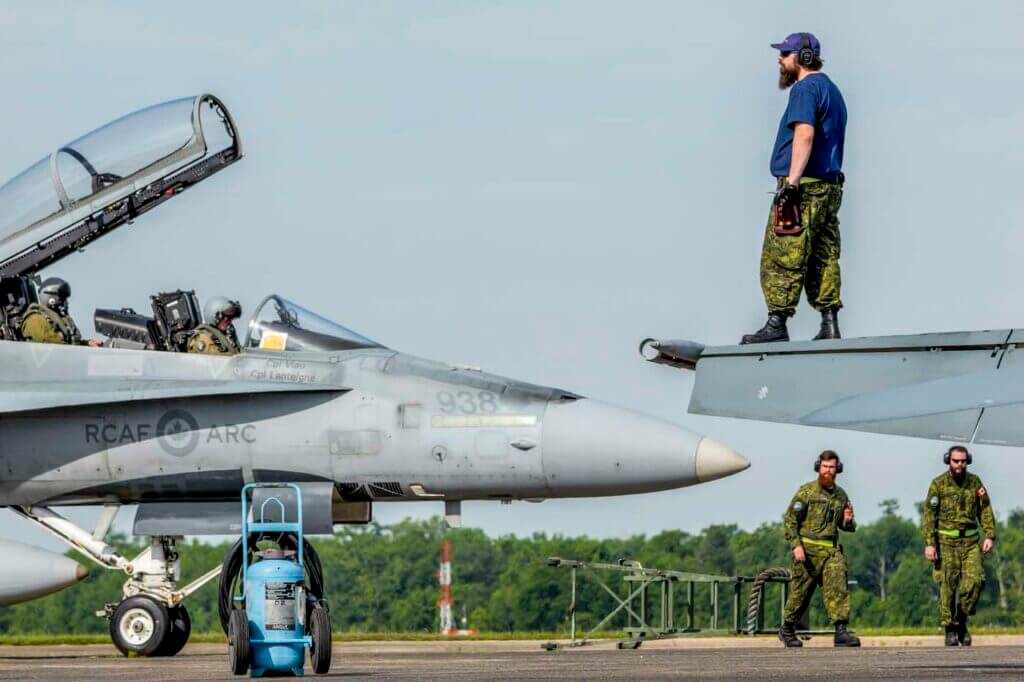
“Physically, that meant looking after yourself, eating well, exercising, and sleeping well,” said Taylor. “Mentally, the guys on the Squadron were a great support. [As well,] having family to support you back at home is very important.”
It is during the high-workload, high-stress elements of sorties that crews really excel. To remain focused, Taylor and his colleagues mastered task organization.
“A key to maintaining focus is compartmentalizing and focusing on the task at hand, solving the task, and then moving on to the next one,” he explained. “Also, [it’s about] making sure you prioritize those tasks appropriately, so you can focus on each one in the correct order.”
To ensure there were sufficient CF-188s to meet the exercise’s tasking order, the aircraft were regularly maintained and serviced pre- and post-flights — as they would be at home in Canada.
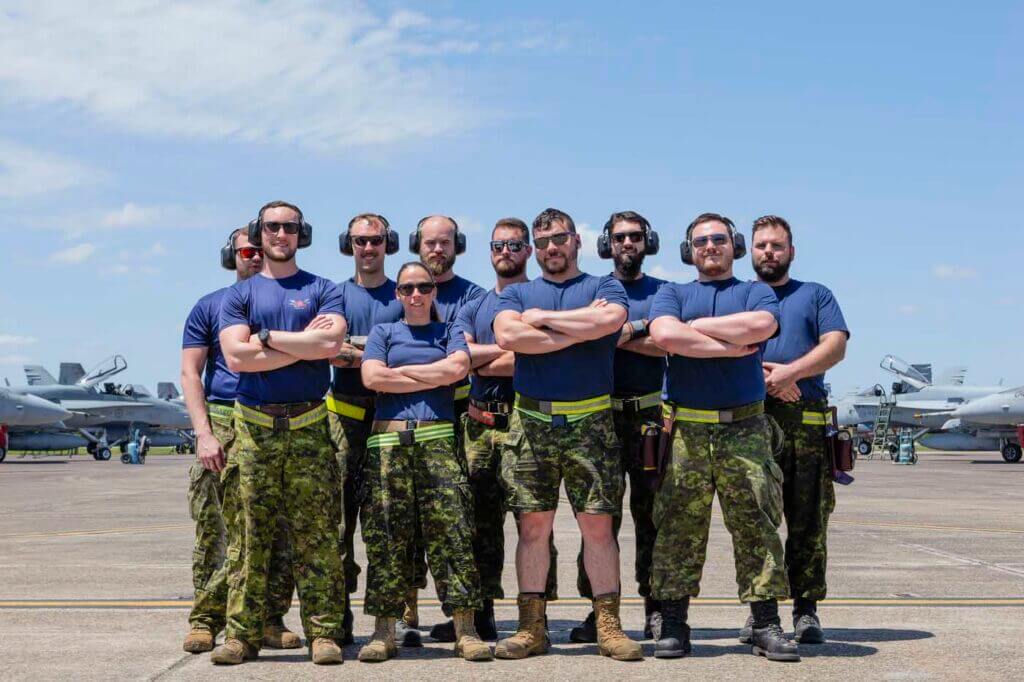
During Cougar South, aircraft technician shifts began with a daily brief to discuss which aircraft were unserviceable and why, and which aircraft were needed for the day’s flying program. The priority was to ensure the Hornets that were slated to fly were serviceable, with a back-up if required. Once enough serviceable jets had been generated, technicians could switch their focus to repairing those that were grounded.
Cpl Patrice Cormier is a CF-188 avionics systems technician with 425 Squadron, responsible for keeping the electronic heart of the Hornet beating. Inspired to join the RCAF not only by the opportunity to learn about aircraft maintenance, but also to “deploy, train, and experience really cool things,” Cormier is regularly called on to troubleshoot and remedy avionics faults as they arise.
The most common snags faced by Cormier and his teammates stem from faults with the Hornet’s “boxes” — a number of small black avionics boxes that control and regulate all things electrical, from the APG-73 radar to the flight control surfaces. Faults could be mechanical, such as a broken pin in a connector cable (the cables use a male/female join, typically consisting of a number of metal prongs — much like the plug on your TV at home), or software requiring troubleshooting via Toughbook computers.
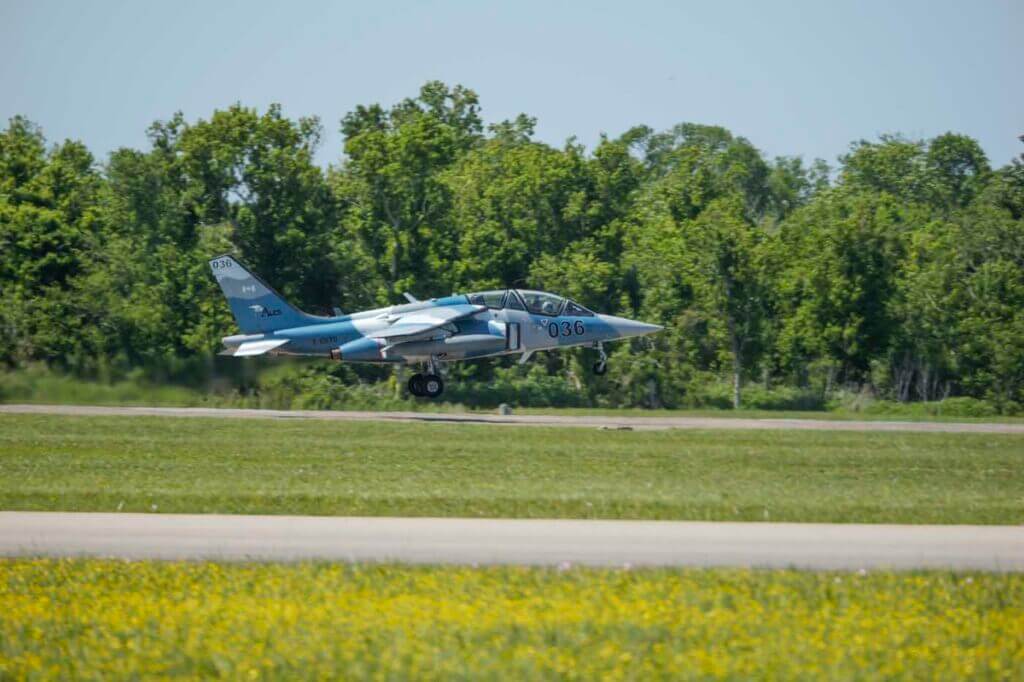
It is no cliché to say teamwork is integral to aircraft maintenance: “To make sure the CF-18s are always operating effectively [and] safely, we have a lot of people working around them,” said Cormier. “There’s always someone else taking care of a certain part of the task — you have a lot of different links in the chain.”
Technicians are not assigned to a single aircraft, but instead work to maintain every jet in their squadron fleet. To salute their tireless work, the RCAF will often decorate Hornets with the names of specific technicians. In Cormier’s case, his name and role as an avionics systems technician “has been painted on one [CF-188] jet for a couple of months,” he said enthusiastically.
Key Takeaways
During the course of the Cougar South deployment, which ran for approximately six weeks, the RCAF focused primarily on two-ship and four-ship upgrades, and achieved an average of 10 lines of flying per day. That was thanks to being in a “deployed environment with better weather than in Canada,” said commanding officer Latwaitis.

Moreover, the exercise area was just a short flight away from NAS JRB New Orleans, “and it had very few restrictions,” he added. “It allowed us to train down to a low fuel state so we could really take advantage of the time out in the area.”
However, Latwaitis noted that while the flying during an exercise like Cougar South is the highlight, it’s not just about what happens in the air. Exercising the logistical side is important, too.
“It’s about making sure we can get all of our gear through customs; how we can get all of the tractor-trailers and air-lifts there on time with the right materiel to provide the right sortie generation capability for the jets that we have,” he told Skies.
“How we deployed [to Cougar South] was very similar to how we deploy to any other exercises in North America or Europe,” continued Latwaitis. “Some of the lessons that we took away from [Cougar South] were: How big of a task force do we need? How many technicians for how many aircraft? How many pilots? What’s the flying rate? . . . All of those are their own challenges, and each section got a good look at their individual training.
“Overall, I would say this type of training is invaluable; it’s not something
you can replicate at home.”
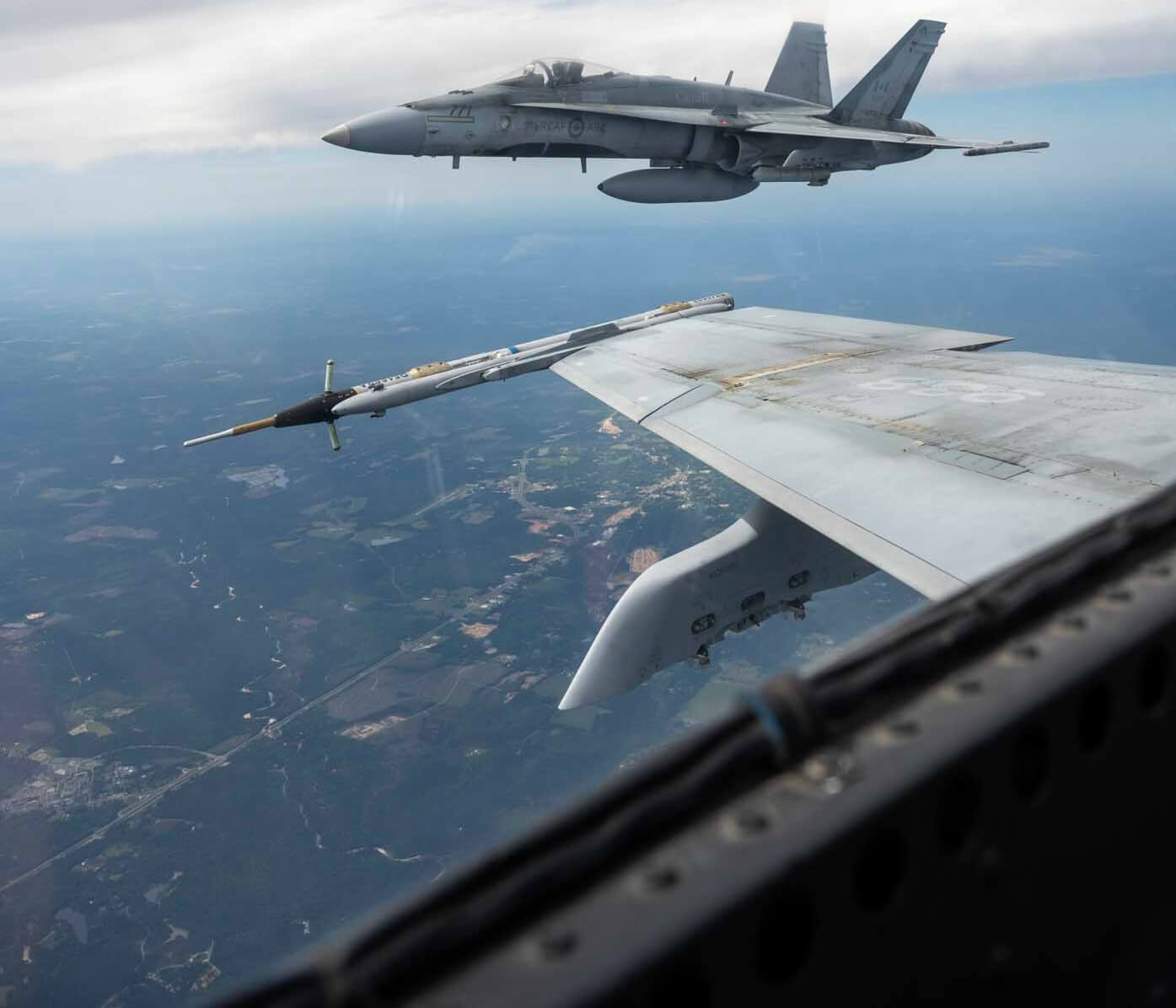
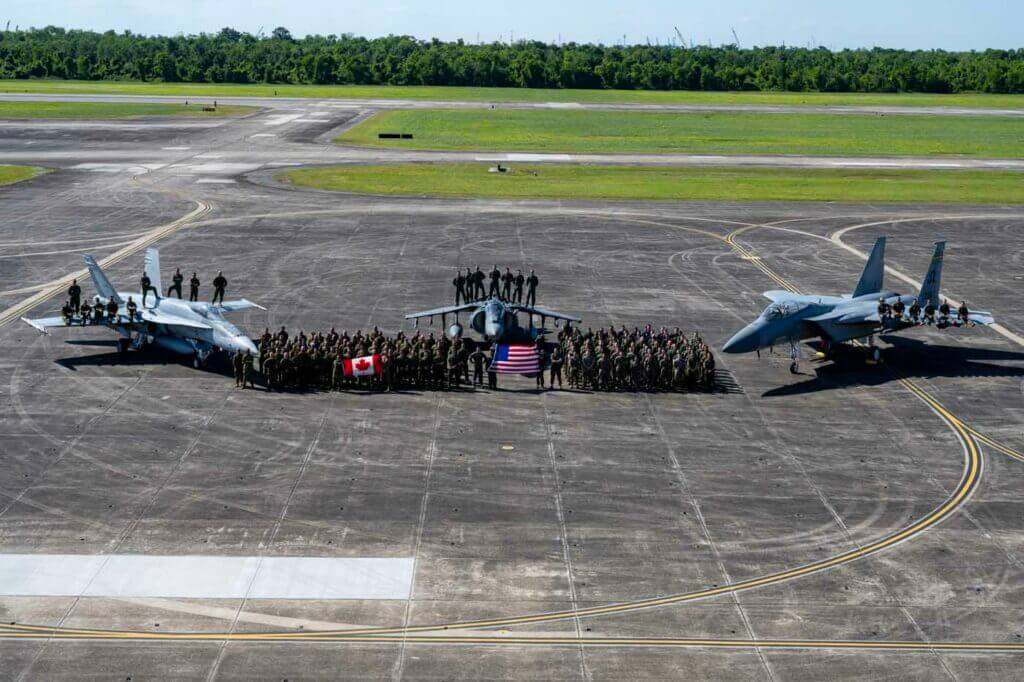

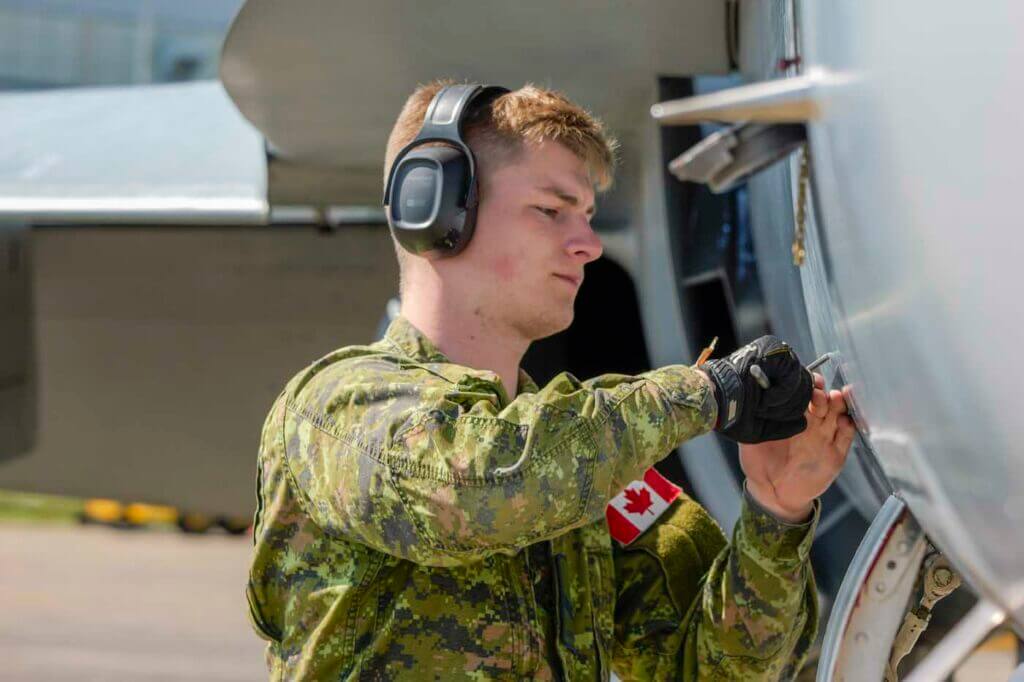
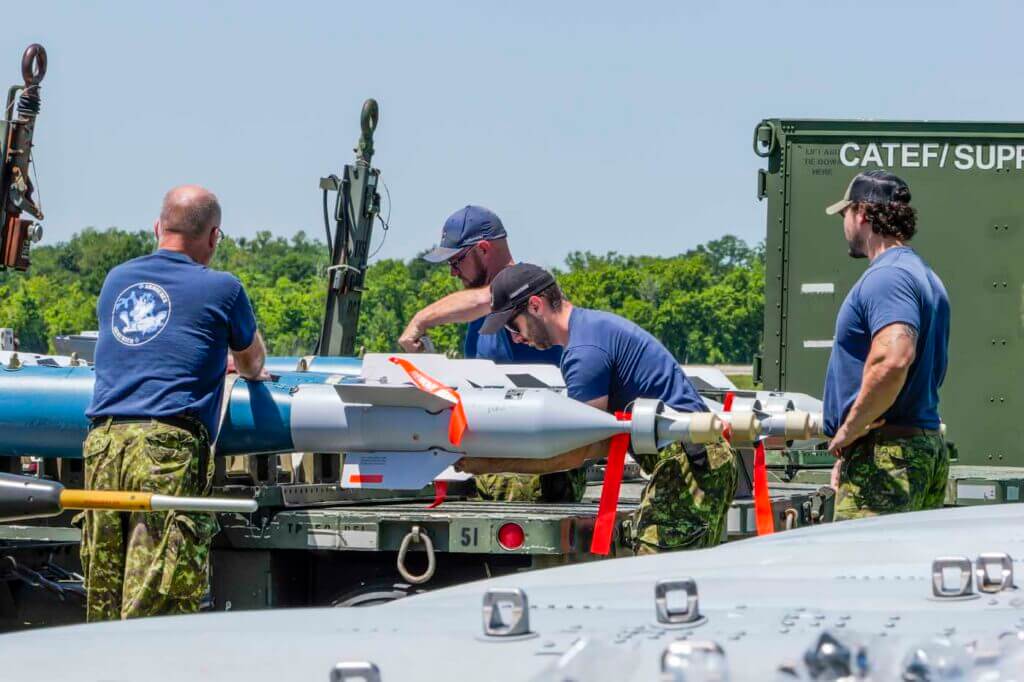
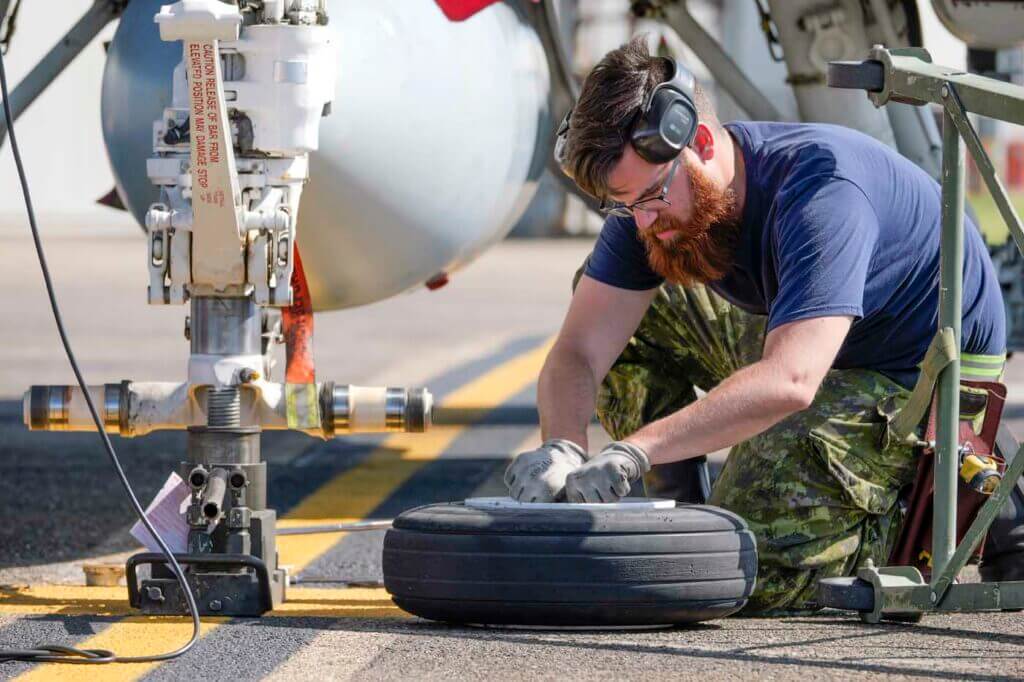
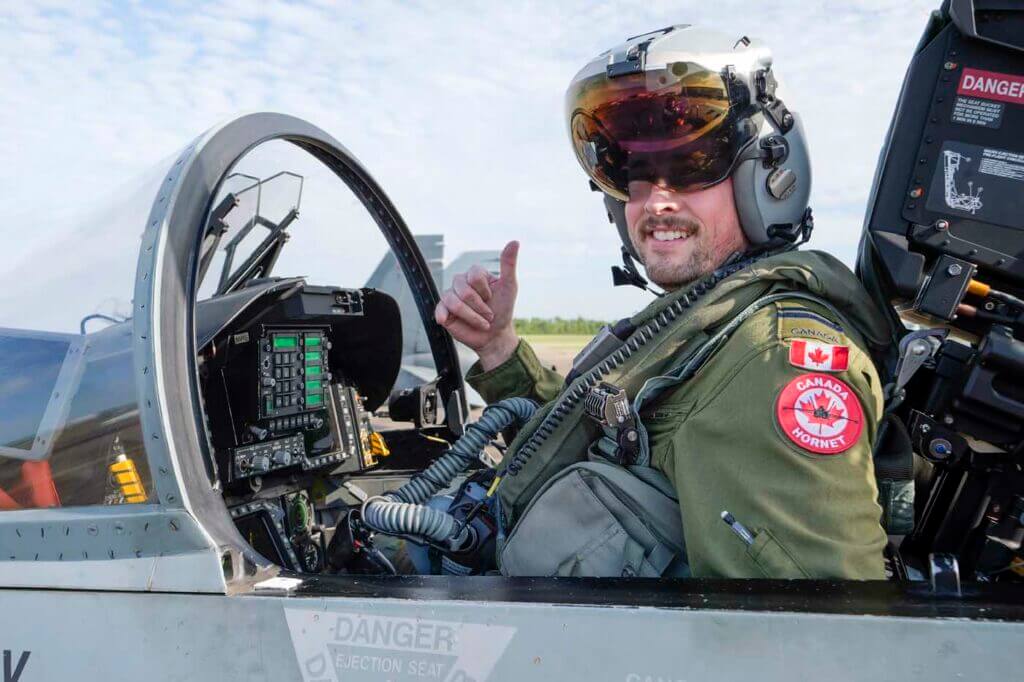


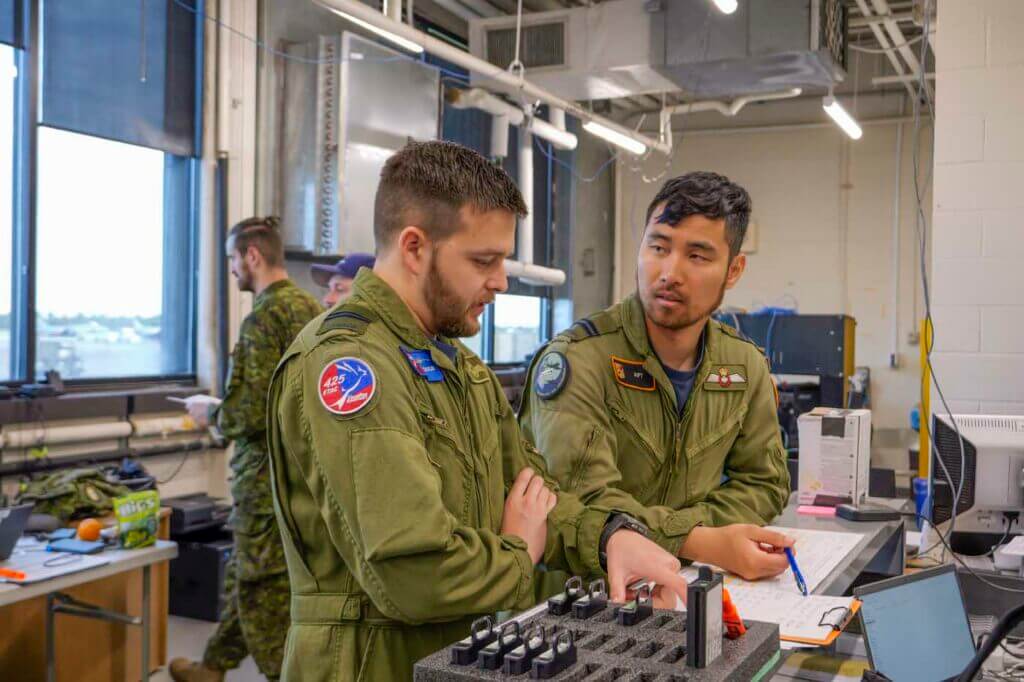

wow! thank you for posting on the Net,, Sure Bring back memories, the feeling of the heat & humidity when step-out the the airplane with your winter parka on!! LOL